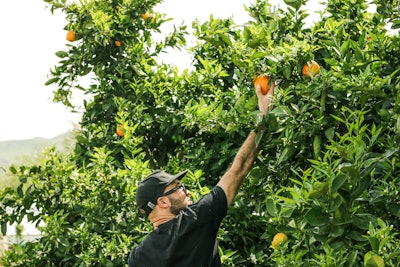
It is no secret that margins are tight in the food sector. Packaging, just-in-time delivery, storage, distribution—it all eats into a business’ bottom line. This means that the slightest bump in the road could spark serious concern for owners.
A number of years ago, climate change concerns started out as that potentially slight bump in the road. However, over the past couple of years, this bump in the road has quickly developed into a potential roadblock in the eyes of many business owners.
For instance, a 2018 Futerra survey of over 1,000 consumers in the United States and UK showed that 88% of respondents would like brands to help them be more environmentally friendly and ethical in their daily lives.
It doesn’t help that critics point the finger at the food industry in particular, bemoaning everything from the emissions of cows and the sustainability of meat production to the use of plastics and the carbon footprint of the airlines that fly produce around the world for next-day consumption.
Welcome reality for food industry
Business owners hear these concerns and know they have to act. But, when that reality dawns, they think of one thing – added costs. Because changing the way you do business can be expensive, right? Thankfully, the reality is that it doesn’t have to be this way for the food industry.
Take lighting, for example. Every single business involved in the production of food at scale needs buildings, and of course, every single building needs lighting to operate.
Taking it further, widespread use of light-emitting diode (LED) lighting has the greatest potential impact on energy savings in the United States, according to the U.S. Department of Energy. In fact, by 2027, widespread use of LEDs could save about 348 TWh (compared to no LED use) of electricity.
However, this may seem like cold comfort to the business owner worried about the cost of technology, installation, maintenance, depreciation and the actual cost of replacement.
Win-win situation
That’s where Light-as-a-Service (LaaS) comes in. This service means that a third-party provider offers the lighting equipment to a business, installs it, maintains it and replaces it when necessary.
The equipment itself is not owned or even leased by the business, meaning a depreciating asset is kept off the balance sheet and the business’ borrowing capacity is not affected in the future. The third party does not charge interest fees, and receives payment from the energy savings realized in the first place.
It’s a win-win situation.
And, there are plenty of other opportunities for enterprising business owners looking to do their bit for the environment and save money. Lighting is just the beginning.
When it comes to energy and carbon savings, there are plenty of options.
Solar energy, for example, represents a good way to cut back on conventional energy bills. Sophisticated heating, ventilation and air conditioning (HVAC) systems are also available.
But, another issue that supply chain providers regularly encounter is assessing how much energy they currently use, and how much they stand to save if they switch to an alternate energy source.
Assessing energy usage has, up to now, usually involved extensive site inspections and analysis, often over several months at a number of sites in different regions. Again, business owners think of this and think expensive.
But, new technology ensures that businesses just need to establish four key metrics for each building – its size, ceiling height, current electricity costs and operating hours.
Owners should enter these figures into a dedicated energy savings app that instantly calculates the savings. Doing so saves a significant amount of man hours, and helps companies make environmental and financial decisions easier and faster.
It is clear to anyone in the industry that challenges exist in the food sector. But, ironically, the advent of climate change presents a number of opportunities for business owners.
They can now profess their genuine environmental credentials to clients and customers, safe in the knowledge that their bottom line will be even healthier than before. It’s a 21st century solution to a global problem that hopefully, in time and with a lot of effort, can confine to the past.


















